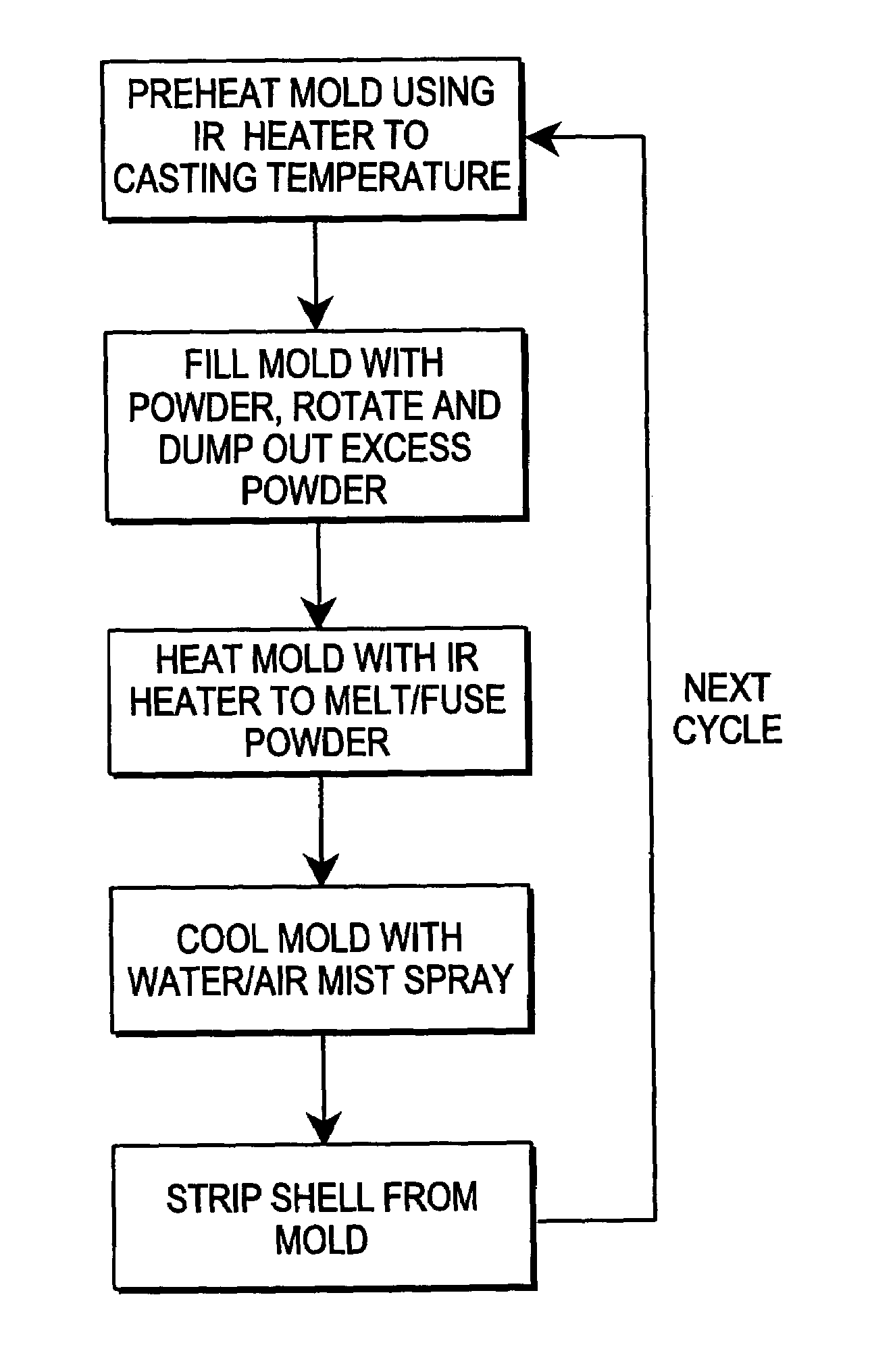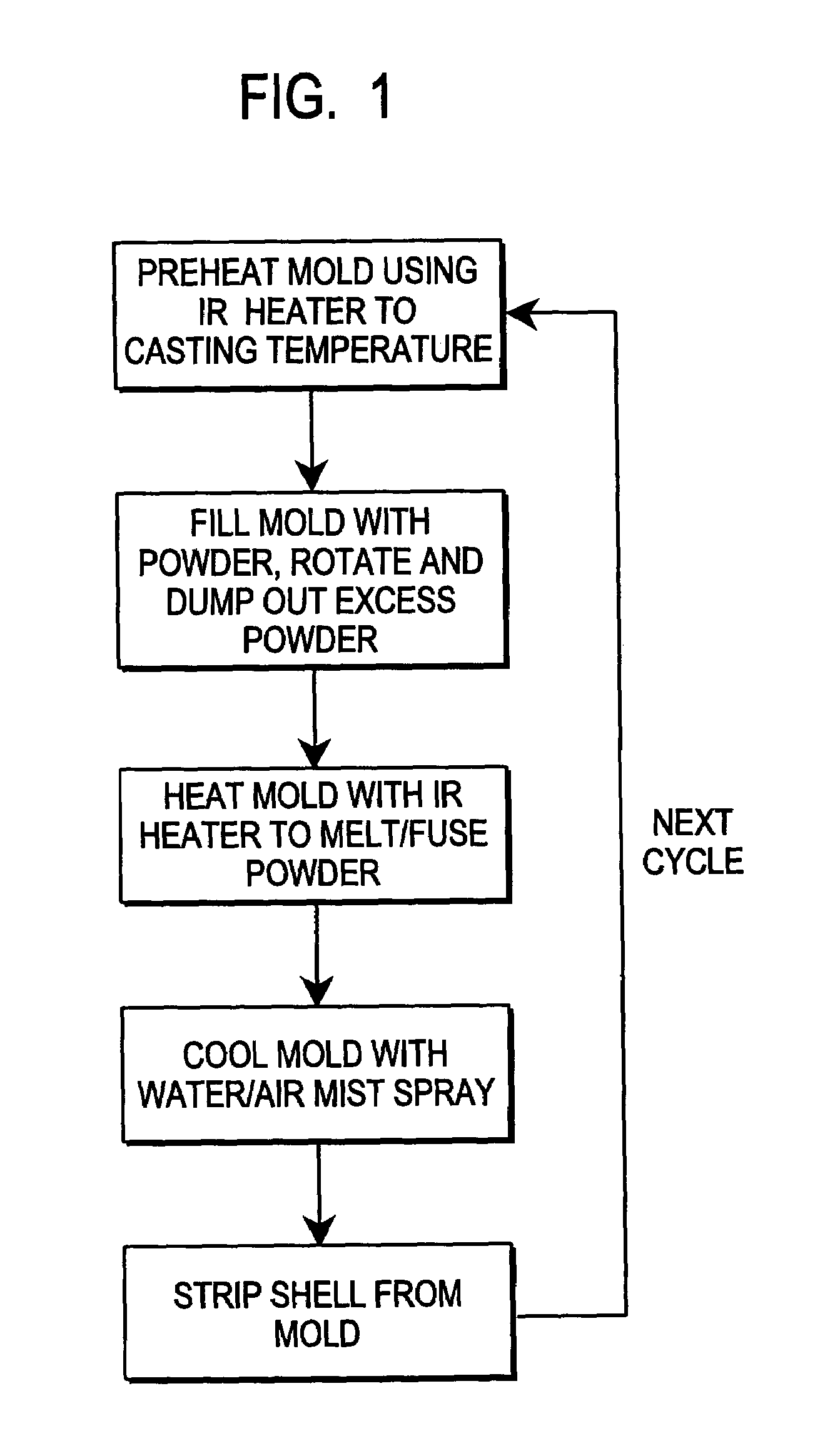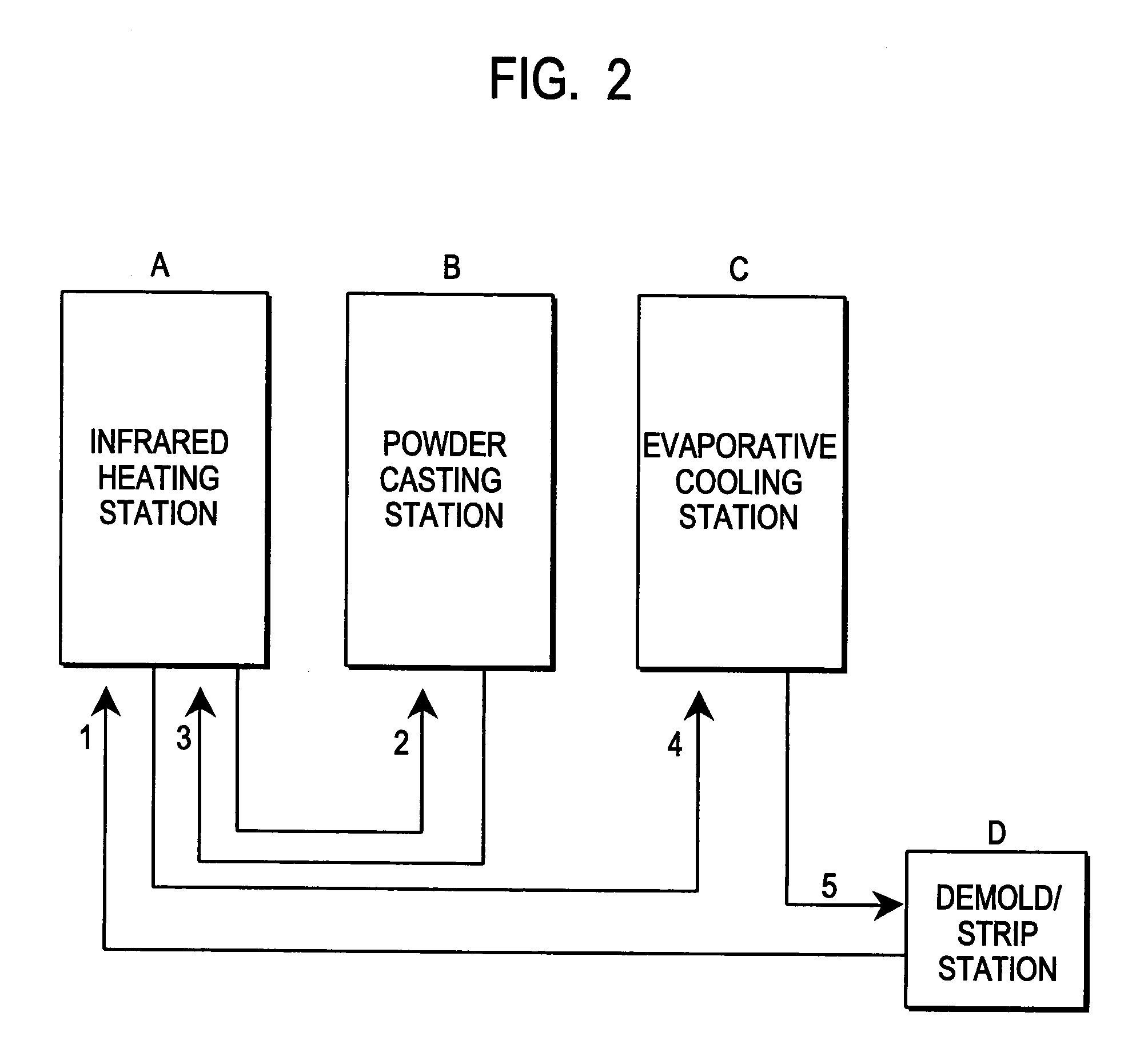Plastic skin forming process
a plastic skin and forming technology, applied in the field of plastic skin forming process, can solve the problems of limited mold shape, difficult maintenance of cleanliness, and large electroforming nickel tools that cannot be rotated in various axes, so as to reduce cycle time and any propensity to stress crack, reduce heat waste, and eliminate the effect of ducting and surrounding ambient area heating
- Summary
- Abstract
- Description
- Claims
- Application Information
AI Technical Summary
Benefits of technology
Problems solved by technology
Method used
Image
Examples
Embodiment Construction
[0019]As noted above, FIG. 1 is a flow chart depicting the process steps used in the invention to produce plastic skins for automotive trim applications. A thin electroformed nickel mold is preheated using electric infrared heaters and when the mold reaches the preferred powder casting temperature for the specific plastic powder being processed, the mold is filled with powder, by using a powder box which clamps onto the mold face and when inverted fills the mold cavity with powder. The mold is then rotated generally around its major axis to allow the powder to contact the exposed heated inner surface of the electroformed mold and melt on this heated mold surface. Next the mold / powder box combination is inverted and any unmelted powder falls back into the powder box which is then unclamped and retracted. The mold is then sprayed with a fine mist of water and air to cool its surface to the desired stripping temperature. Once the stripping temperature is reached, the cooled solid skin ...
PUM
| Property | Measurement | Unit |
|---|---|---|
| emissivity | aaaaa | aaaaa |
| emissivity | aaaaa | aaaaa |
| infrared energy | aaaaa | aaaaa |
Abstract
Description
Claims
Application Information
 Login to View More
Login to View More - R&D
- Intellectual Property
- Life Sciences
- Materials
- Tech Scout
- Unparalleled Data Quality
- Higher Quality Content
- 60% Fewer Hallucinations
Browse by: Latest US Patents, China's latest patents, Technical Efficacy Thesaurus, Application Domain, Technology Topic, Popular Technical Reports.
© 2025 PatSnap. All rights reserved.Legal|Privacy policy|Modern Slavery Act Transparency Statement|Sitemap|About US| Contact US: help@patsnap.com



